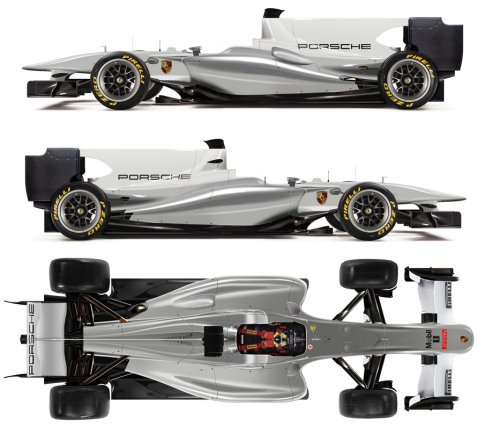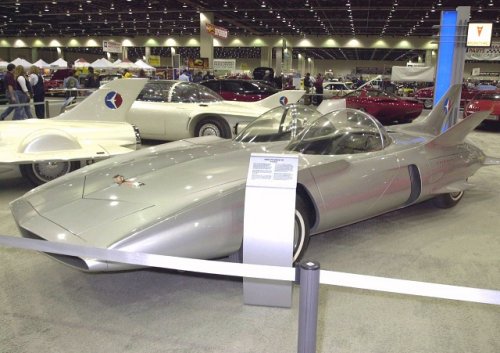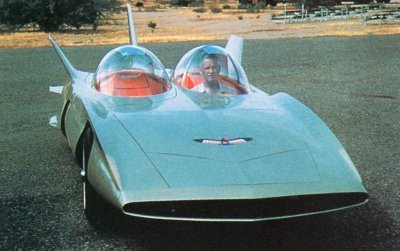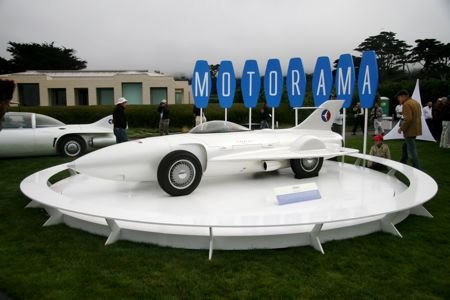This is what I've been up to when not making jets. In fact I may start making all my orthogonal illustrations in perspective as I have done this one. I was kicking this one around the various car and motorsports magazines covering the raft of rules changes for F1 in the near future...but no takers.
It's what the cars may look like in a few years with the new Turbo/KERS formula. Gone are the airboxes, and provided the rules call for single turbos, potentially the "blown" floors; certainly less effective with only one exhaust exit. In lieu of the ram air inlets of contemporary cars are the spinal rollover elements coupled with a turbo intake snorkel a la Audi R15 plus. The F-Duct is abolished (as of next year) though a passive one not unlike this year's Mercedes might do in conjunction with the movable rear element that is allowed for 2011 onwards. The sidepods have been extended further forward to improve lateral impact protection as is likely on the cards. The floors are to receive generous allowances for venturi channels to decrease the reliance on the wings, which will be correspondingly smaller. I imagine something in the realm of Monza spec depth to balance out the increase in floor generated "negative" lift. The wheels are now more production car relevant in size 18-19 inch as is common in LMP1. The 1.6L engine with its ancillary bits and possibly exhaust heat generated KERS is entirely notional however as there would have to be a buyer for me to continue the with the rest of this illustration.
It's what the cars may look like in a few years with the new Turbo/KERS formula. Gone are the airboxes, and provided the rules call for single turbos, potentially the "blown" floors; certainly less effective with only one exhaust exit. In lieu of the ram air inlets of contemporary cars are the spinal rollover elements coupled with a turbo intake snorkel a la Audi R15 plus. The F-Duct is abolished (as of next year) though a passive one not unlike this year's Mercedes might do in conjunction with the movable rear element that is allowed for 2011 onwards. The sidepods have been extended further forward to improve lateral impact protection as is likely on the cards. The floors are to receive generous allowances for venturi channels to decrease the reliance on the wings, which will be correspondingly smaller. I imagine something in the realm of Monza spec depth to balance out the increase in floor generated "negative" lift. The wheels are now more production car relevant in size 18-19 inch as is common in LMP1. The 1.6L engine with its ancillary bits and possibly exhaust heat generated KERS is entirely notional however as there would have to be a buyer for me to continue the with the rest of this illustration.




